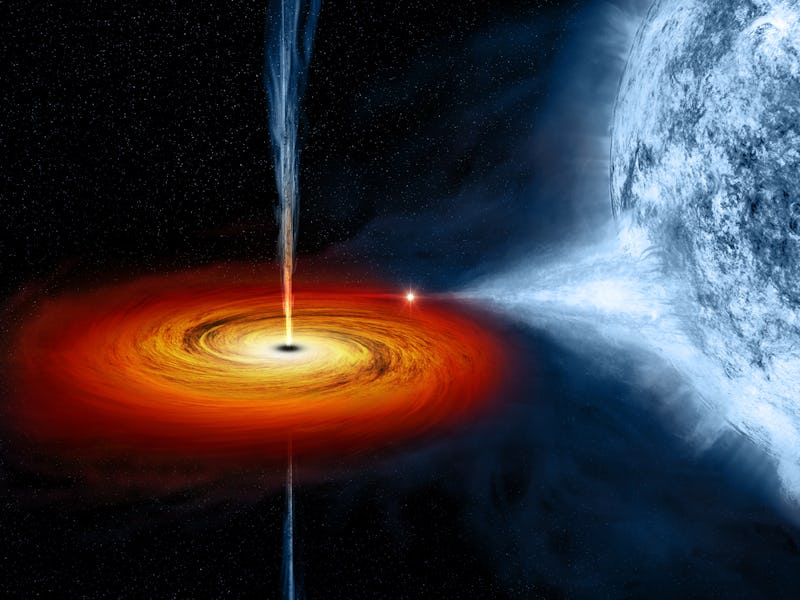
Black holes are the undoubtedly some of the hungriest boys in space. Though we’re unlocking some of the mysteries about these spooky voids, there’s still so much out there to be learned — for one thing, we’ve never even directly observed one.
Now, astrophysicists at Brown University and Harvard University who study gravitational waves say these ripples in the fabric of space and time could help them investigate the possible existence of a very specific kind of black hole, one that hypothetically formed right after the Big Bang. The team’s work on how scientists can do this in the future was published Thursday in Physical Review Letters.
Here’s the logic: In the moments after the Big Bang, the density of the cosmos fluctuated so much that this would have caused gravitational collapse, thus creating a number of primordial black holes across the universe. Some scientists have suggested these black holes would have created dark matter, or the mysterious stuff that makes up most of the material universe. But of course, there’s lots of layers of ambiguity and speculation to all of this.
When it comes to primordial black holes, there’s a lot left to investigate — and some very smart people have tried to do just that. In the 1970s, Astrophysicist Stephen Hawking was among the first to suggest the existence of primordial black holes — but alas, still no luck finding them.
Simulation frames from a NASA Goddard neutron star merger animation
The researchers involved in this new work think that gravitational wave detectors like those from the LIGO and VIRGO Scientific Collaborations — which had some incredible recent successes in their most recent observing run — could be helpful tools for primordial black hole hunting.
“The idea is very simple,” the study’s co-author Savvas Koushiappas, an associate professor of physics at Brown University, said in a statement. “With future gravitational wave experiments, we’ll be able to look back to a time before the formation of the first stars. So if we see black hole merger events before stars existed, then we’ll know that those black holes are not of stellar origin.”
Scientists use redshift — which describes the frequency of wavelengths — to determine how far back in time an event took place. The higher the redshift, the older an event.
For the sake of this study, the events in question would be black hole mergers. According to the researchers, gravitational wave detectors should be sensitive enough to detect a redshift of 40, which is equivalent to about 64 million years after the Big Bang. If they’re able to detect black hole mergers beyond this redshift, this could prove the existence of primordial black hole mergers.
At this point, there are still so many more questions than answers when it comes to primordial black holes. Future generations of gravitational wave detectors will be even more sensitive, allowing scientists to understand so much more about these space-time ripples.
At least the hunt for these ancient, hungry giants will be fun.